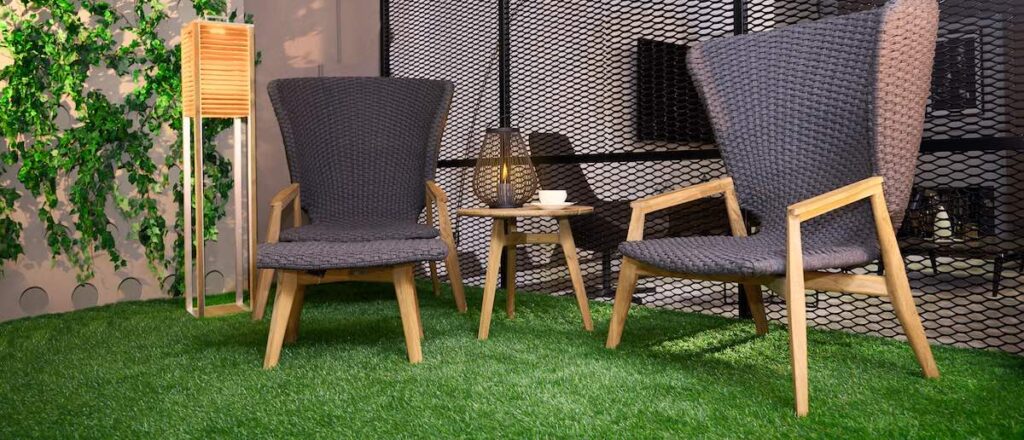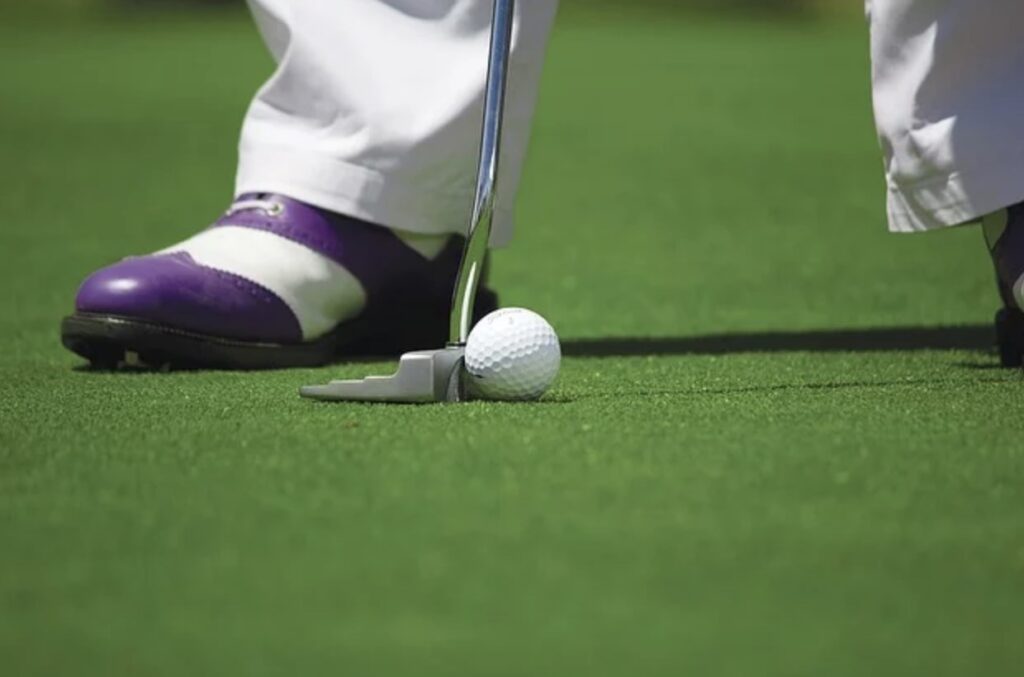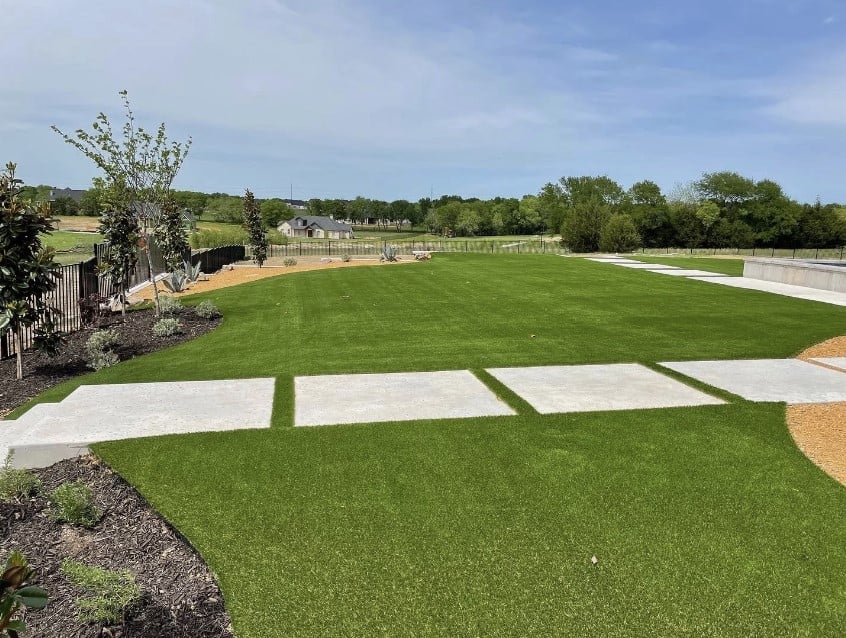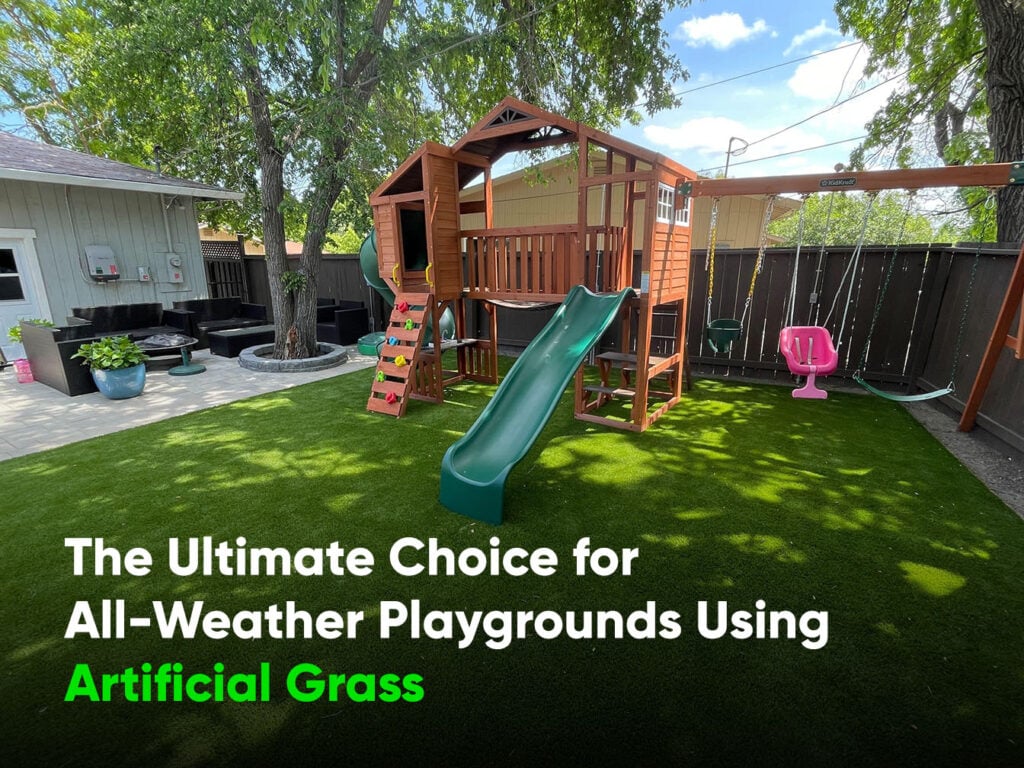How Does Imitation Grass Drain?
Installing an artificial turf system is one of the best decisions a homeowner can make. Not only does imitation grass require far less maintenance, but it also helps save the environment by reducing your water usage. Many people have heard horror stories about pooling water and poor drainage. Modern artificial grass manufacturers have completely fixed these issues. Keep reading to learn about the built-in turf drainage systems available in today’s imitation grass.
Natural Draining, Imitation Grass
If your artificial grass is placed right on earth, as is common in most systems, you won’t see any drainage problems. Modern synthetic lawns are designed to drain just as efficiently as natural grass.
All artificial grass products have a backing material under the grass blades. It can be made of several different materials but in all cases is designed for efficient drainage.
There are small holes at regular intervals across the material that allows water to flow right through it. Once it reaches the soil underneath it goes directly into the natural water table.
Hard Surface Draining
With hard surface draining it really comes down to the existing drainage apparatus in place. In most cases, your concrete or brick was put in place with a drainage plan in mind.
It will be sloped to direct water to another part of the lawn or into a drainage pipe. If you’re already experiencing drainage problems on your patio, you’ll need to have them corrected before having artificial turf installed.
The backing material on your grass will also act as a turf drainage system. It will allow water to flow across it to drainage pipes or to drain down into holes drilled through the hard surface.
Proper Installation Is Key
For either drainage system to work effectively they must be properly installed by professionals. Artificial grass installation is one home renovation you shouldn’t DIY.
When a professional is surveying your existing lawn, they’ll take into account specific things. These include slope, soil content, and rainfall conditions. This will help them decide how to proceed.
They will begin by excavating a layer of your existing lawn. Then they’ll grade it to the proper specifications. They’ll then add in a high-quality base material such as gravel and sand to allow water to fully drain down to the water table.
For installations over brick, concrete, or other hard surfaces a slope analysis will need to be performed. Your installer will look at the existing lay of the land and figure out if there are already drainage problems. Usually, they will apply a self-leveling compound to smooth over any imperfections in the material.
If your patio doesn’t already have a drainage system in place your installer will need to modify it. They’ll drill several small holes through it to prevent artificial turf drainage problems.
Invest in Quality to Save Later Headaches
One of the worst things you can do when installing imitation grass goes for a bargain basement version. If you buy quality and have it professionally installed, you’ll save big on reduced maintenance costs and issues.
If you’ve been thinking about replacing your existing lawn with an earth-friendly artificial one, contact us today for a consultation.




